Malaysian Armed Forces Chinese Veterans Association
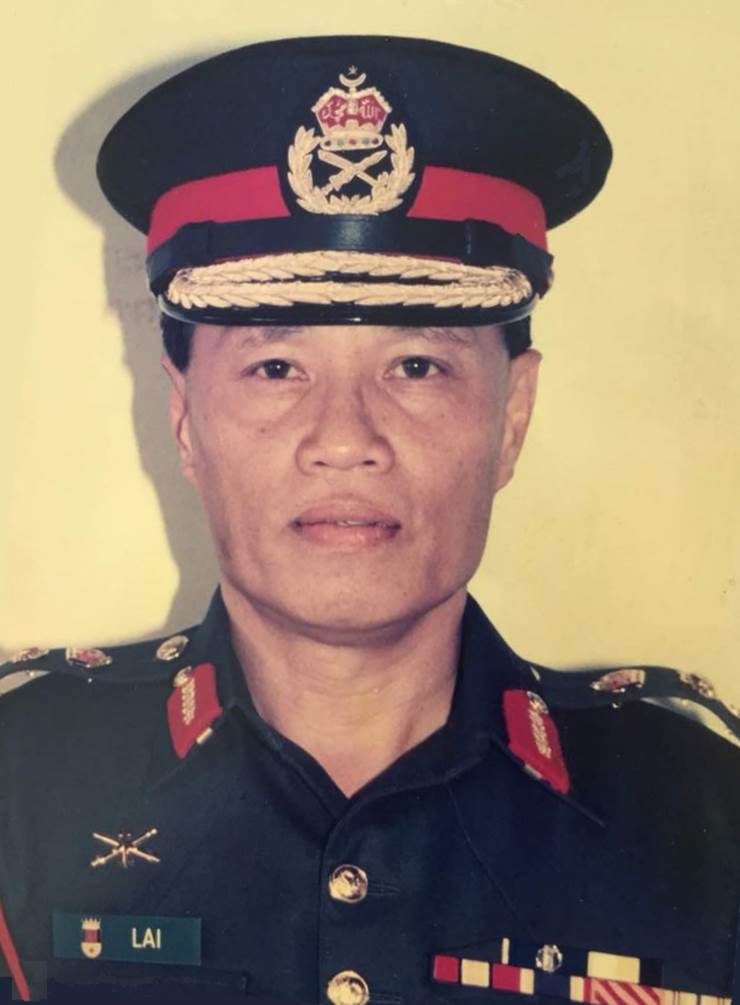 |
||
Colonel Allen Lai Kim Hinn (Rtd)
PAT KMN PKK (Kelantan) BSK (Kelantan) PJK (Perak) PPA
Preface
In early June 2018, I got back home to Ipoh after a short outstation break. Among my many unread emails; I saw one from Colonel (Col) Allen Lai Kim Hinn (Rtd). He had attached some short write-ups which he had written and was please that I had published the story of his elder brother Lieutenant (Lt) Col John Lai Kim Chee (Rtd) in MACVA Archives on 22 Apr 18. We got acquainted and I mentioned that I did not have the good fortune of meeting him while in service. Col Allen Lai Kim Hinn (Rtd) (Allen) replied that he had joined the service in 1963 and retired in 1999; which was 17 years earlier than my enrolment as a Cadet in Royal Military College (RMC) in 1980.
There is an old African proverb which says “When an old man dies, a library burns to the ground." Malaysian Armed Forces Chinese Veterans Association (MACVA), have Veterans from mid-thirties to late eighties. Senior Malaysian Armed Forces Chinese Veterans (MACVs) have much wisdom and experiences to be shared and stories to be told. If one ask the right questions, listen patiently and indulge in them, we may well get even more out of these ‘libraries’.
MACVs stories are experiences that were accumulated over the years of their services and most will also carry messages about their success and struggle during those moments. There are in reality histories and testimonies to the honours and sacrifices of MACVs who have served the King and Country. These stories should not be left to oblivion but recorded and kept in the MACVA Archives which is shared through the MACVA Website. This is an effort by MACVA for Malaysians to know and to acknowledge their contributions as Malaysian along with other Malaysian Veterans to the development of the Malaysian Armed Forces since its establishment; to the sovereignty of our beloved Country since its independence and to the well-being and stability that the nation enjoy today. The Allen Lai Story was recorded over the next few weeks.
The Lai Family
Allen’s family comprise of 13 siblings; nine brothers; three younger sisters and an adopted sister. His late father; Mr Lai Ping Seong was a 2nd generation Malaysian Chinese in the Lai family group as Allen’s grandfather had migrated from China. Mr Lai was born in Selangor, and was educated in Chinese and English schools. He was briefly a school teacher after the Japanese Occupation in the 1940s and later served in Telecommunications Department Malaya in the late 1940s /1950s. He started off as a Linesman and eventually became a Technical Assistant (TA) in Microwave Radio. He retired from Telecoms in the 1970s at the compulsory retirement age of 55 years old and was awarded a Certificate of Appreciation by the Director of the National Operations Council (NOC) in 1969 for his contributions, service and personal sacrifice during and post May 13 Incident. This was indeed a very rare recognition and honour by the Malaysian Government for a Malaysian Chinese.
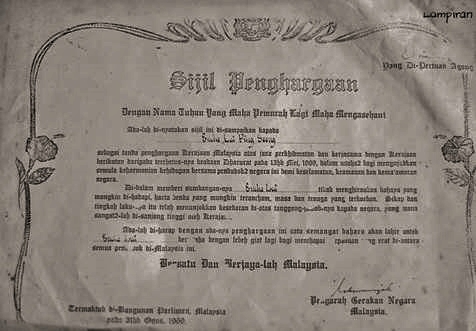 |
Mr Lai had served the Government well and contributed beyond the call of duty for his Country. He was bilingual and had many English expatriate friends. During the Japanese Occupation he was a member of the elite Force 136, albeit a non-combatant, and had contributed in other areas to the Force. He had worked very closely with the Malaysian Police Force and with the British administrators and planters in the 1950s through 1970s. He was always armed with a Smith and Weston pistol and a USA carbine rifle after escaping from kidnapping and assassination attempts by the communists.
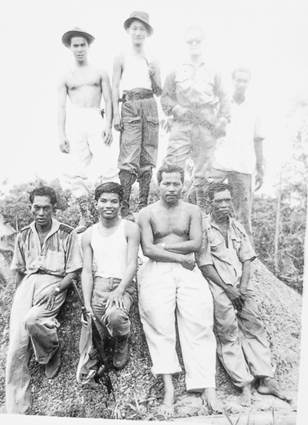 |
Mr Lai's contribution to the Country include his life long fight against the communists and serving the Government by ensuring all the Telecoms Microwave Stations which were located in remote hill stations were operational 24 hours a day. Most important of all, he had raised a well-balanced and successful family to carry on his legacy to serve the country. He had instilled in his children’s integrity, honour, humility and to always behave as officers and gentlemen. He encouraged his children to do what they would liked to do, including joining the Military and Police. A tribute is also in order for the sibling's mother Madam Ng Quay Cheng for her unconditional mother's love and patience; and for her lessons in instilling discipline and frugality into all her children.
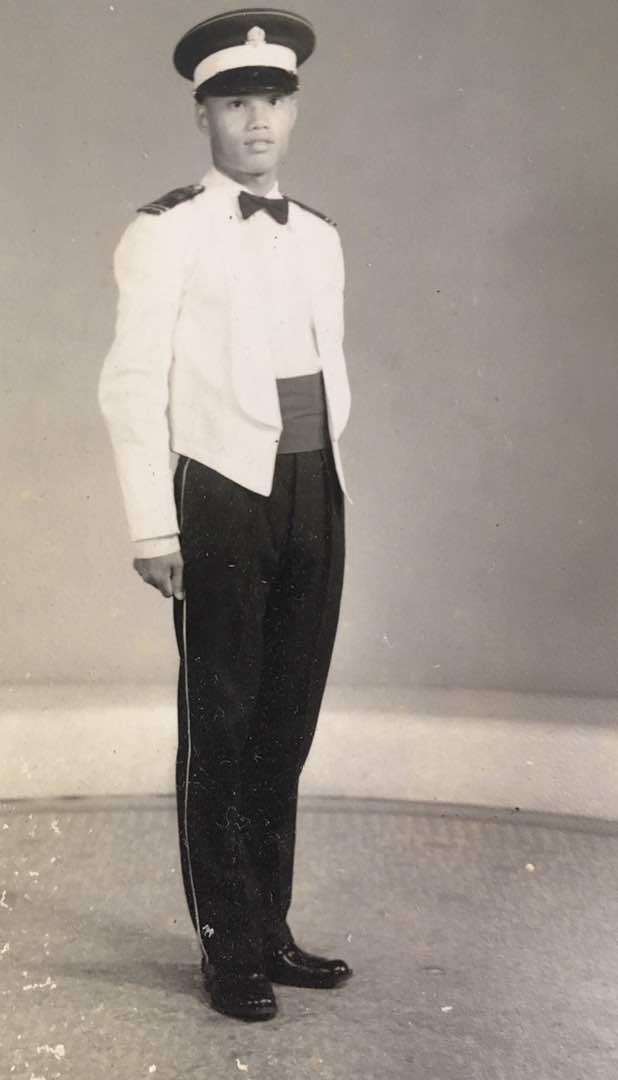 |
Joining The Army
Allen was born on the 5th of August, 1944 in Serdang Selangor. He was the 6th son and had his primary education at Pudu English School in Kuala Lumpur, King George V school in Seremban and continued to secondary schooling at Sultan Abu Bakar School in Kuantan. As a young boy, Allen was very active out-door and in particular Boy Scout’s activities. He had represented Malaysia to the Tenth World Scout Jamboree held in the Philippines in 1959. He also often accompanied his father doing maintenance works in the remote hill radio stations, often driving through gazetted black roads at night.
Allen believed that “Everyone all have some innate talents, skills and character in themselves. Only that they did not realize them and hence they could not leverage on these gifts as they did not recognized, nor develop them further”. He grew up as tough kid in the block surviving streetwise on the wrong side of the street. Poverty saw his brawling skills developed naturally faster than his soft skills and he was coming close to being a drifter had he not joined the army.
The desire to serve the Country was strong within Allen’s siblings; thanks to his father’s upbringing and legacy. Allen was the 5th Lai brothers to join a Uniform Organisation. After obtaining his GCE, Allen joined the Seventh Regular Cadet Intake in Cadet Wing, Federation Military College (FMC) as a Naval Cadet in 1963.
Allen recalled that he actually joined the Malaysian Navy as a Cadet Officer in 1963 to sail in the Seven Seas of the World. “Seeing the world” was a natural calling for him and he had no strings attached. He was seventeen plus and had just finished his School Cambridge Exams at Form 5 in November 1962 and was waiting for his exam results which were only due to come out in March the following year; allowing him four months to ‘hang around’.
The Malaysian Navy Recruitment Team came to Kuantan in December 1962, seemingly a good port of call to recruit able bodied youths to join the Navy. The Recruitment Interview and Aptitude Tests were challenging and interesting, but Allen had no problems and he was a very fit young man. He was accepted into FMC, under aged for service as the minimum age is eighteen and with only forecasted results from his Form Five exams. The Interviewers obviously saw the unpolished diamond in Allen. He was accepted as a Naval Cadet but his astigmatic eye sights failed to allow him to see the World with the Navy. He was then offered to join the Army instead, continuing his Cadetship in FMC.
And so it was, crossroads are always in the way in one’s life and you get to choose the pathways. Allen said that “If he had not continued to remain in FMC, he dread to think of what he would have become.” FMC offered two Cadetship streams, Regular Commission Intake for two years and Short Service Commission Intake for a year in the College. Regular Cadets do three days a week academic classes in preparation for the High School Certificate (HSC) exams; irrespective whether the Cadet already had his HSC Certificate upon signing up. Hence some Senior Veterans have two HSC Certificates.
Term One Year One, was particularly tough and strange for Allen. He had not left his temper and street ways outside the College Guardroom. He had a ‘fist talk’ with a Senior Cadet and was almost discharged with ignominy from the College. The Commandant pulled him up and he was given his first counselling session. He had to be an Officer and Gentlemen and to ‘Serve to Lead’ if he wanted to be commissioned by the Yang Di Pertuan Agong. Allen learnt his lessons that there are other solutions in life. He stayed and was promoted to Cadet Sergeant in his senior year. He was commissioned on 3th December 1964 and was assigned to the Royal Artillery Corps.
“Allen thanks the Army that he is now on the right side of the street, matured, confident, competent, multi-skilled and a respected senior citizen still doing his part to serve King and Country.”
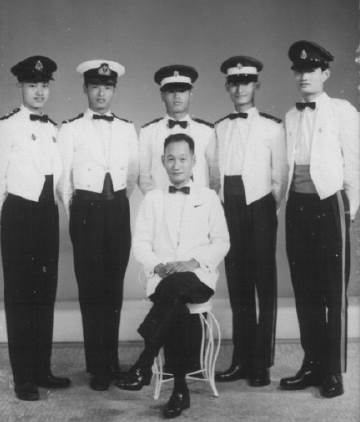 |
The Lai Brothers
Besides Allen as the youngest, his elder brothers in uniforms were Kim Yin, the eldest son, Kim Hon, second son, Kim Hean, third son and Kim Chee fourth son. They were all 3rd generation Malaysian Chinese in the Lai family. Kim Yin first joined HMS Laburnum in Singapore as a Seaman. He was commissioned as a Sub-Lieutenant (Sub Lt) a year later. HMS Laburnum was the Headquarters (HQ) and training ship for the Singapore Naval Volunteer Reserve (SNVR) which was the Singapore Division of the Royal Malayan Naval Volunteer Reserve (RMNVR) then. Kim Yin resigned his commission when he returned to Malaysia to work for private business. HMS Laburnum was later to become the RSS Singapura.
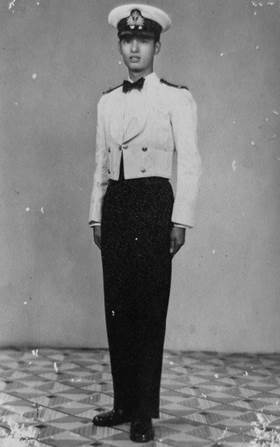 |
Kim Hon joined the Malaysian Police Training Centre (PULAPOL) and graduated as a Police Inspector in the Royal Malaysian Police (PDRM). His first posting was General Duties (GD) in Penang. He later volunteered to join the Police Field Force (PFF) in the early days of the Confrontation with Indonesia. It was also a great surprise when Kim Hon met Kim Hinn in his first PFF operations in Kota Tinggi, Johore. Both brothers were Platoon Commanders and were attending the Intelligence Briefing and Ops Orders at the Kota Tinggi Police Station. They were deployed to conduct Search and Destroy Operations (Ops) against the Indonesian Commando unit inserted into Johore in the Kota Tinggi/ Mawai area in 1965. Kim Hon later was deployed twice to the 1st and 3rd Divisions in the Sarawak/ Kalimatan border.
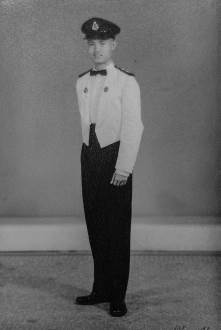 |
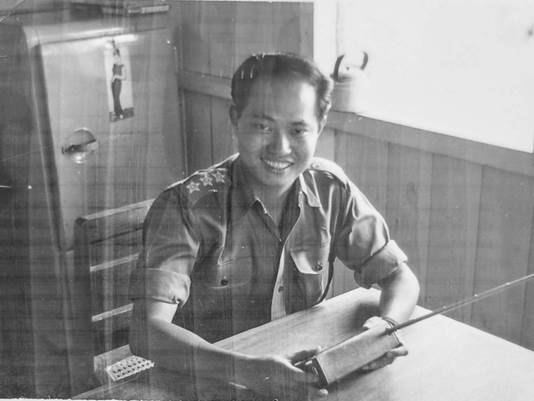 |
Kim Hon's greatest contribution to the Country was his posting to the PFF Training School in Kroh Perak. He became the Senior Directing Staff conducting conversion courses for GD police personnel to join the PFF battalions. He also trained foreign police personnel from Thailand, South Vietnam, Laos, Cambodia and Sri Lanka in jungle warfare. Kim Hon's most memorable training task was to train 5,000 personnel soon after the May 13 incident, in batches to meet the requirements to form up additional PFF battalions. For that the IGP presented him with a letter of commendation. He was also awarded the Pingat Khidmat Berbakti (PKB), Pingat Peringatan Malaysia (PPM) and Pingat Perkhimatan Am (PPA) service medals. He was promoted to the rank of Chief Inspector after 18 years of service.
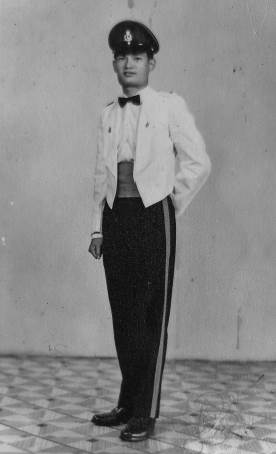 |
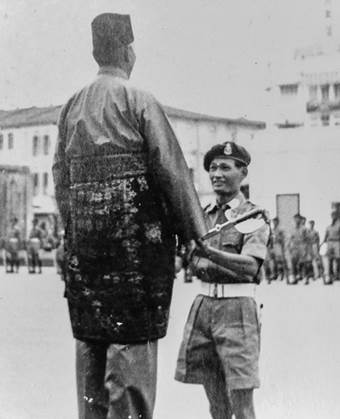 |
Kim Hean joined the Singapore Volunteer Corp as a Cadet Officer. After one year of training in Singapore, he graduated with flying colours and was presented the Sword of Honour by the Yang Di-Pertuan Negara of Singapore Tun Yusof Ishak. He was commissioned as a Second Lieutenant and served the Singapore Volunteer Corp. Upon his return to Malaysia he continued his military service for the next 18 years with the Malaysian Territorial Army (TA). He had commanded TA Transport Companies in Kuala Lumpur, Penang and Ipoh. During his service he was awarded the PPA and Pingat Perkhimatan Setia (PPS) service medals. He was promoted to the rank of Major.
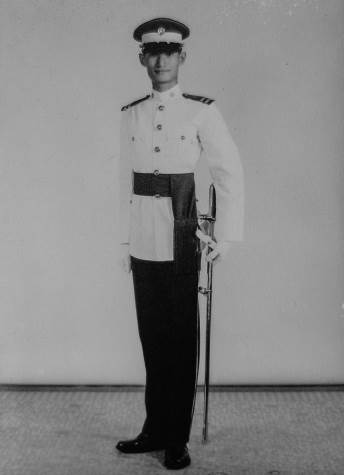 |
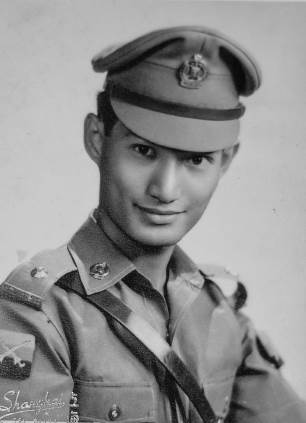 |
Kim Chee first joined the Boys Wing FMC in Port Dickson. From 1957 to 1960 he represented the College in boxing at various Commonwealth Boxing Tournaments and wining all his fights. He then joined the Sixth Regular Intake Cadet Wing FMC and was commissioned into the Ordnance Corp in 1963. Whilst studying at the Royal Military College of Science (UK) in 1966 he represented the College in fencing and became the champion in the Novice category. He had served as Chief Ammunition Technical Officer (CATO) and was in charge of explosives, ammunitions and army bomb disposal units for several years. He was awarded the Jasa Perkasa Persekutuan (JPP) medal in 1978 for bomb clearance and disposal in the 1975 Labuan Ammunition Depot Incident. JPP is the Highest Federal Gallantry Award for conduct of gallantry not in the face of the enemy. In addition he was also awarded the Pegawai Bintang Kenyalang (PBK) for meritorious service in Sarawak. He was promoted to the rank of Lt Col and retired after 30 years of service.
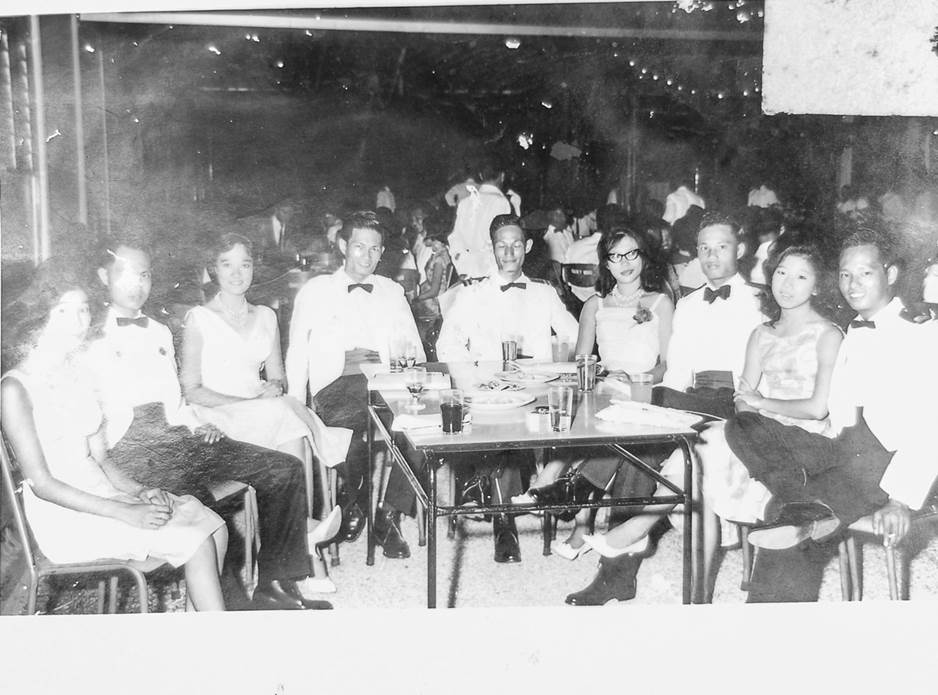 |
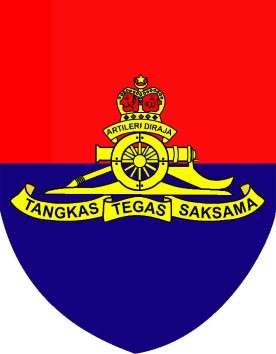 |
Royal Artillery Corps
The Army is structured into fighting formations and units where the epitome of one's career and ultimate joy of every officer is to command a formation or unit. For an officer to command a unit he had to undergo a number of career courses, promotion examinations and interviews. However as there are limited formations and units for all, particularly in Artillery regiments, the selection process was very thorough but sadly seniority in rank and good grades in career courses sometimes had very little leverage.
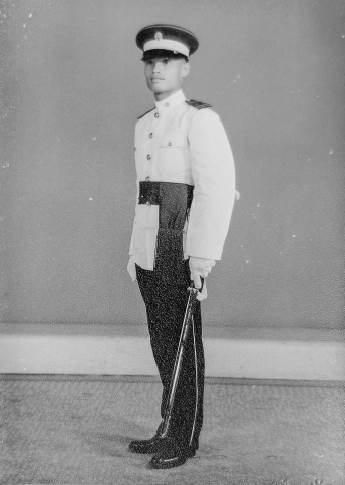 |
Second Lieutenant (2nd Lt) Allen was commissioned in FMC Sungai Besi in 1964 and posted to 2 Artillery Regiment together with 2nd Lt Steven Pan Kong Leong in December the same year. He was assigned to E Battery 2 Artillery (E Bty 2 ARTY) and Steven Pan to F Bty. Both were put up in an old Gurkha hutted camp beside the Sg Besi Chinese graveyard. There were only two Federation Artillery Regiments in 1964. 1 ARTY which is also located in Sg Besi, had three gun Btys, A, B and C Bty and 2 ARTY had D, E and F Bty.
E Bty had a Battery Commander (BC), Major John Lane RA (Royal Artillery) and a Battery Kaptain (BK), Kapt Mustapha Saad FA (Federation Artillery). The BK and Allen took up the rest of the Bty appointments; Section Comd, Gun Position Officer (GPO), Troop Comd and 2nd BK. The Commanding Officer (CO) of 2 ARTY was Lt Col Webb RA. 2 ARTY moved to Taiping in mid-1965 and took over the British Military Hospital in Kamunting Camp. By then; Taiping Garrison already comprised an Engineer Squadron (Sqn), Malaysian Service Corps (MSC) units, Ordnance units, Military Police (MP) units and 1st Royal Rangers.
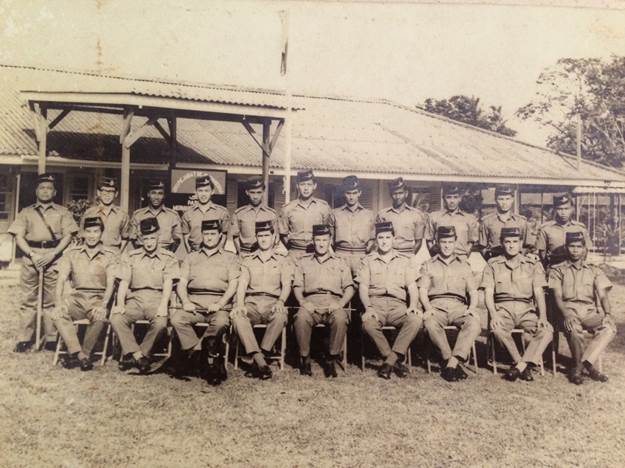 |
Sitting Left to Right: Johan Hew (BK D Bty) , British QM, Barney Cottam (BC F Bty) , British Adjutant, Webb (CO), Huching (2IC / BC HQ Bty) , Wigglesworth ( BC D Bty) , John Lane (BC E Bty) and Mustapha Saad (BK E Bty). Standing Left to Right: RSM Harun, Wong Hing Jee (OC LAD), Bernand Nonis, Pan Kong Leong, Aziddin, Hng Hung Meng, Albert Manaseh, Paul Pulendren, Meor (Paymaster), Allen Lai and Aris Salim. |
Allen was induced early into the ways of the British Army as British officers were still seconded to the Artillery regiments in the 1960s and 1970s. His first Commanding Officer and all Battery Commanders were British officers and he had no problems serving in the regiment. Allen had progressively held all the regimental appointments and was glad to have ‘gone through the mill’.
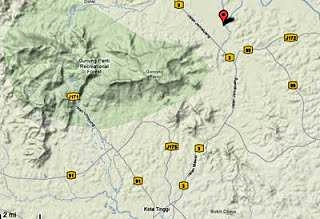 |
First Operation as Footslogger
After his 14 days post commissioning leave, Allen reported for duty at Sg Besi Camp and received Warning Order for immediate operations from his Adjutant. All officers and gunners were to be recalled from leave and a Regimental 'roll call' was to be made at 2200 hours that evening. The Regiment was ordered to be deployed to Johore in 48 hours. 2 ARTY was Army Reserve Troops at that point of time. Regt Tactical Headquarters (Tac HQ), D Bty and E Bty were regrouped and deployed to the Kota Tinggi / Mawai area in Johore as 2 Infantry companies and 4 platoons.
Indonesian Commando Troops had parachuted into Kota Tinggi / Mawai, area and had butchered 18 soldiers from 2 SIR (Singapore Infantry Regt). They have landed in the Johore jungles east of Gunung Panti and along the Selangor coast with only their personal weapons and very little combat rations. A massive Search and Destroy mission was launched. 2 ARTY was deployed to join the Cordon and Search Ops and 1 ARTY was deployed to the Selangor coast. Red Marker shows Regt HQ deployed to Mawai area in above map.
2nd Lt Albert Manaseh and Allen were platoon commanders with E Bty. The BC was Major John Lane RA. Officers and Senior Ranks were armed with the 9mm SMGs and the good old 7.62mm Self-Loading Rifle (SLR) for Gunners. Platoon Support group had HBSLRs. (Heavy Barrel Self Loading Rifle). The enemy carried Armalite AR15. They were flown directly to Changi Airport Singapore, by the RAF transport planes at 1500 hours and immediately airlifted by RAF Whirlwind Helis to a school padang in the Mawai FELDA scheme. They were received by 7 Bde HQ Staff and Allen’s platoon was in their first ambush position with the help of a guide before last light at 1830 hours the same day they took off from Sg Besi. Allen was operational and facing a real enemy within 48 hours of reporting for duty.
The first two nights were uneventful and the third night had a bit of excitement. It was full moon and Allen received a report that the enemy were moving towards their general direction. It was past midnight and they were in a linear ambush layout. Allen recalled his Platoon Sergeant whispering to him “Tuan, musuh!” Allen triggered their silent alarm scheme by pulling on the signals D10 wires. The whole platoon was ready but very tense and the silence was overwhelming. Nothing happened for more than half an hour and the enemy did not come pass their position but was ambushed by another 7 Bde Platoon, about 1 km to their flank. The whole operation was successfully completed in 2 weeks. All enemy troops were killed, captured or surrendered. E Bty managed to capture 5 enemies, Albert’s platoon had one enemy KIA and had recovered all their weapons. The Platoons returned to base all safe and exhausted and clocked up some Bty history.
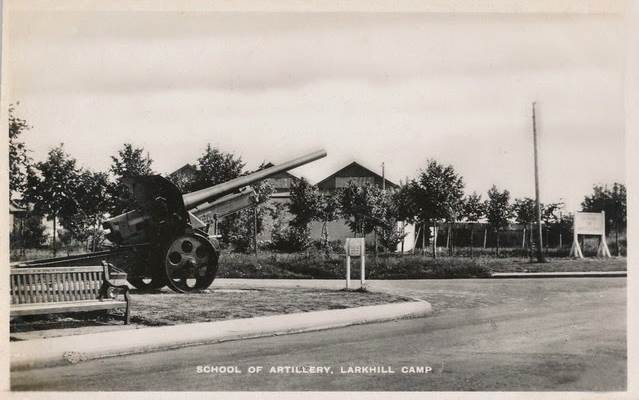 |
Artillery Young Officer’s Course
Allen left for Larkhill, United Kingdom in August 1965 for 6 months to attend the Young Officer’s Artillery (YO ARTY) course. Together with him were Pan, Maskan Katan, and Chin Kai Fong. The Royal School of Artillery, formerly the School of Instruction for Royal Horse and Field Artillery, is the principal training establishment for Artillery warfare in the British Army. Established in 1915, it is located at Larkhill, Wiltshire, on the south edge of Salisbury Plain in the United Kingdom.
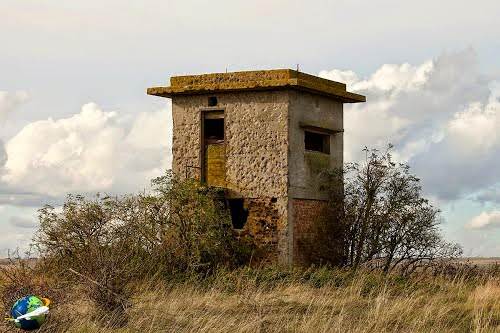 |
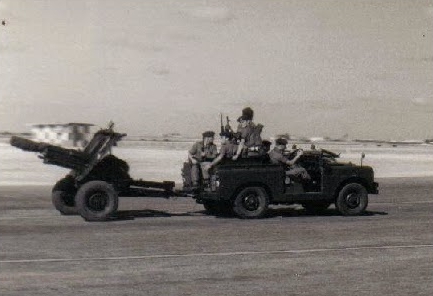 |
For the end of the course deployment, his course was joined by 29 Commando Regiment (CDO), RA. They were supporting 3 CDO Brigade (Bde) Royal Marines from Tidworth, Wilthshire in the south. The CDO Bde and Gunners from 29 CDO Regiment wore their Green Barrets proudly and Allen group wore Royal Blue. 29 CDO were equipped with the “new” Oto Malaria 105 Pack Howitzer, and 14 Field Regiment were still with the 25 pounders. Allen recalled adding that our Malaysian Artillery Regiments also used the Italian Howitzer, to the envy of the rest of the YO's in the course.
Upon completing the course Allen had his second operational experience serving in the British Sector in West Germany during the Cold War. Allen together with 2nd Lt Pan, 2nd Lt Maskan and 2nd Lt Chin were seconded to 2 Field Regiment RA on an operational tour in Munster, Germany. It was early 1965 and Europe was still not yet out of a bad winter. Fresh from Larkhill, they were assigned as Sect Comd in the gun batteries L (Nery) Bty, N (Eagle Troop) Bty and O (Rocket Troop) Bty. Whilst Regt HQ (RHGQ) remained in Munster, the field btys were deployed throughout the British Sector in West Germany. They were part of the overall NATO Force post WW II.
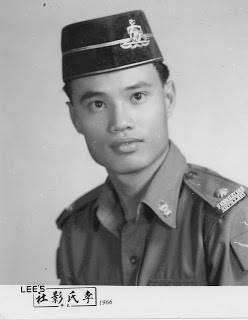 |
2 Field RA had 155mm medium guns. Allen remembered using the old Ferret Scout Car as H1 (High Mobility Multipurpose Wheeled Vehicle) and H2 vehicles. 2nd Lt Pan and 2nd Lt Maskan were privileged to have patrolled along the Berlin Wall, with the famous Check Point Charlie to boot. Allen was patrolling along the British North West sector in the freezing cold, sometimes minus 8 degree Celcius. They stayed in huge double layered tentages with hot stoves inside. Melting snow became sludge and it made their deployment more difficult. They moved a lot along the wide Autobahns and conducted many night maneuvers and night deployments. They experienced a lot of deployment skills in a conventional battle zone and practiced every duty required of a section commander/GPO.
Even though the operational attachment was only for one month, Allen had gained tremendous understanding and insight to their role as Gunners in the battlefield where the need for quick drills and silence were critical. He returned in February 1966 was officially designated FA in the tradition of the British RA affixed to his ranks and names.
Sunshine Airways
In less than 36 hours after reporting back to the 2 ARTY in Kamunting Camp, Taiping, Allen was off to join his battery in Tawau, Sabah. He flew First Class in our very own SUNSHINE AIRWAYS (RMAF was then called) as there was only one class for all passengers. The flight was a weekly scheduled flight from Kuala Lumpur to Tawau via Labuan and Kota Kinabalu. The BK’s land rover was waiting and took him to the Admin Base at the river front in Tawau.
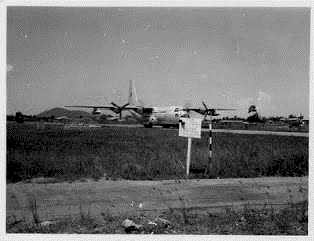 |
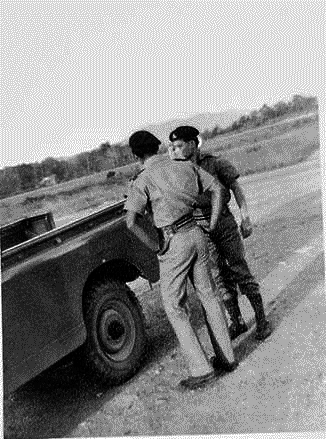 |
E Bty was already deployed in Sabah, with BHQ (5 Brigade) and one gun position in Wallace Bay, Sebatik Island and three other one gun positions in Bogosong, Sg Limau and Semantan. Sg Limau did not have an GPO, hence Allen was to report to Sg Limau ASAP (As Soon As Possible). The Bty Admin Area was based in Tawau under tentages and secured with barb wired perimeter fence and used assault boats as ferries from Tawau to Sebatik Island. All vehicles were also stationed in Tawau except for Wallace Bay which had the BC land rover and local 3 toners from 5 Bde.
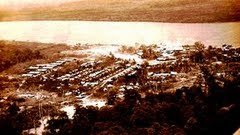 |
The next day, the BK welcomed Allen over the Bty admin net and informed him to remain in Tawau for one more night and to move to Sg Limau the next day. Allen recalled that there were Japanese and Taiwanese merchant ships that ply to Tawau and Wallace Bay for timber and other goods. Their sailors would bring along duty free cameras and watches. Officers and NCOs would buy their first Omega Seamaster watch and Canon camera after receiving their Sabah / Sarawak allowance. Allen left for Sg Limau at first light the following day, commanding the Bty admin run. They had several assault boats, some with twin 45 hp OBM (Out Board Motor) engines clamped together for extra oomph.
Under Enemy Fire
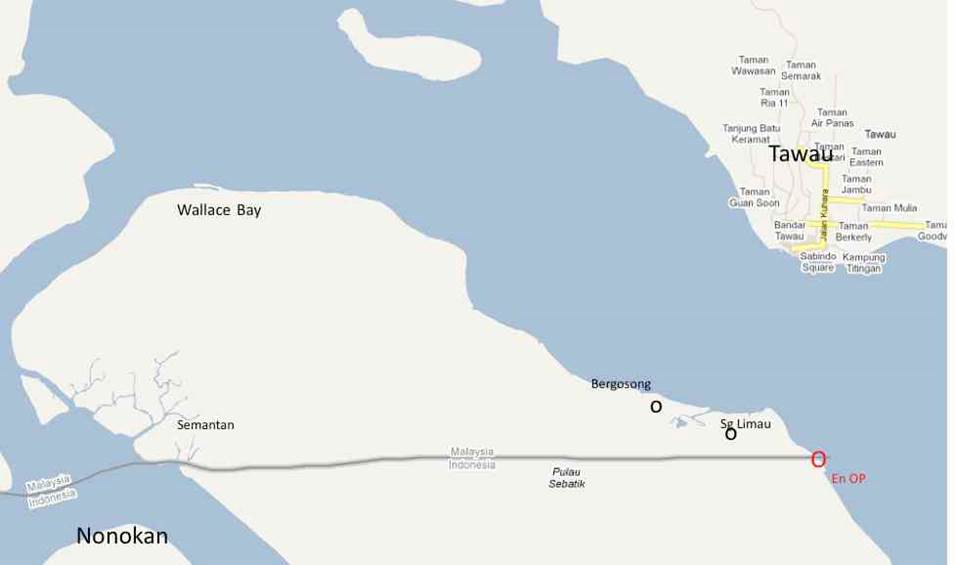 |
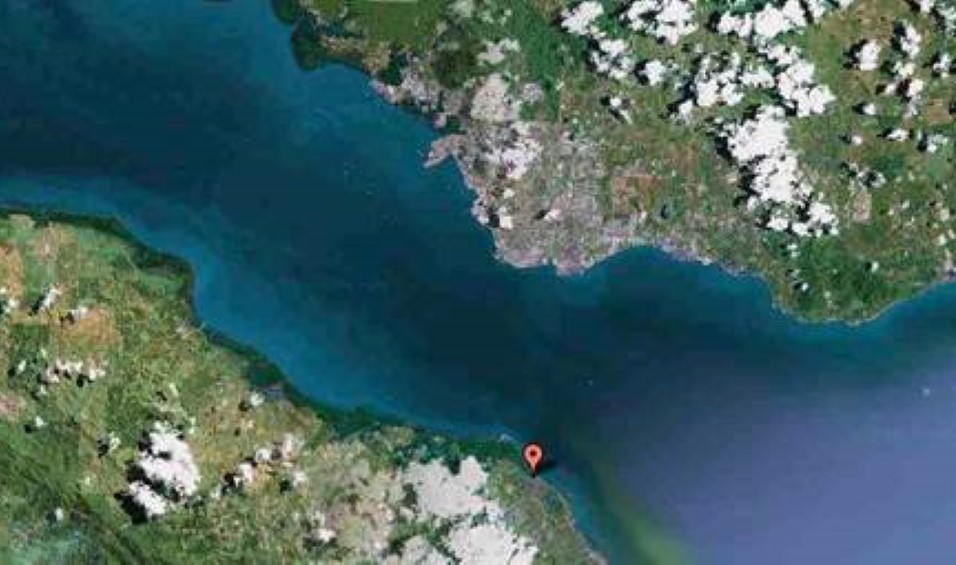 |
The main enemy forces were deployed in Kalimantan Island with its forward HQ in Nonokan town together with a Bty of 155 mm guns and 120mm mortar. They also had superior Naval and water crafts and Static OPs located at strategic positions. Malaysian Infantry Platoons patrolled the border areas and we had boat OPs called BOPs, deployed along the straits between Semantan and Nonokan. BOPs were manned by the Recce Squadron (Sqn). Some BOPs were static. The rules of engagement did not allow either side to cross the border. But probing for intelligence were normal activities. Sometimes the enemy would be bold and challenged our BOPs into engagement.
Allen was assigned as the GPO in Sg Limau, Sebatik Island, just north of the Indonesian border. Sg Limau was about 6 Km up stream of the river. The international border runs smack in the middle and divides the mouth of the river, which was about 600 m wide at low tide. The enemy had a permanent OP located at the mouth of the river and observed /monitored the access to E Bty’s gun position up river. The Bty would have to stay very close to the northern bank of the river when coming into the river from Tawau, as this was the only approach. Approach was often difficult, compounded by strong currents during high tide. If they were not careful, their boats would be pulled southwards and cross the mid line of the river mouth. Hence Bde SOP required all assault boats moving up Sg Limau were to be powered with twin Yamaha OBMs.
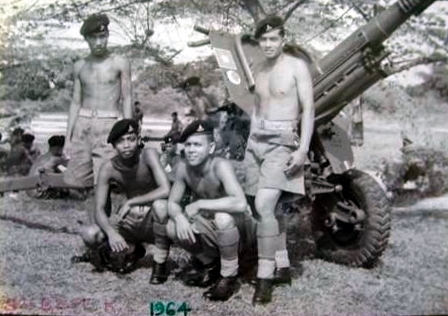 |
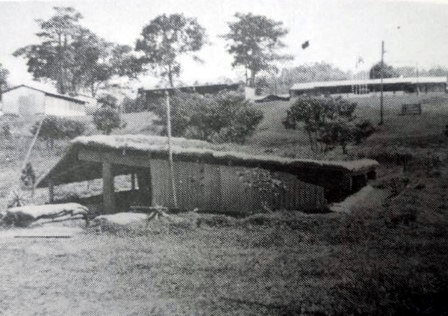 |
Kapt Mustapha Saad, the Bty BK and some Q personnel visited the Gun Positions once a week during the admin/ration run. On one occasion, both the BK’s assault boat’s OBMs stopped as he was approaching the river mouth. As he could not restart the engines, the assault boat drifted strongly towards the international border. The BK and all on board tried very hard to paddle but it was no use. The boat continued to drift with the strong current towards the enemy direction. As soon as the BK’s assault boat crossed the mid line, the enemy opened fire with their HMGs. (Heavy Machine Gun). Bullets whisked overhead. The BK and all on board returned fire until all ammo were expended. Then the worst was to be expected as the Enemy launched two of their assault boats out to capture the BK’s party.
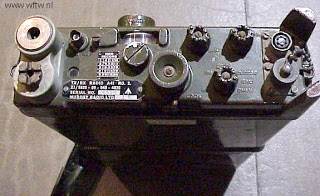 |
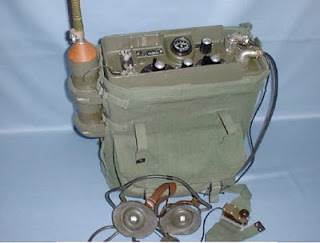 |
Allen was in his bunker when the call came in. “Bty Target, Bty Target, Bty Target. ZQ 1001, En OP position at river mouth. We are drifting and under heavy enemy fire. 5 rounds FFE (Fire For Effect). Over”. The enemy OP position was one of our predicted DF (Defensive Fire) targets. Luckily the target was very close to our map grids. Allen applied the Gills Drop Factor (GDF) to compensate for the incompatible grids and also for lack of metrological data. A GDF scale was designed by Lt MS Gill Singh, one of our GPO who had a university degree in metrological studies, because of inaccurate maps and we did not have access to metrology data. Charge Seven was used, as operationally allowed in Sabah. Allen remained calm throughout the Fire Mission, although his heartbeat was very fast. He took over the radio from the signaller and spoke officer to officer with his BK who ordered direction Golf Tango. Luckily adjustments were not necessary.
As it was, all five rounds were on target and BK personally saw one boat capsized and the other returning to base. The enemy also stopped firing their HMG. Then to Allen’s relieve, his BK informed that they managed to restart the OBMs after that immediate Fire Mission. Thank God there were no casualties on our side. Enemy casualties were not known, inspite of seeing one boat capsized. BK and party did not return to Tawau that day, as they celebrated their safety with ‘Tahlil’ prayers (Thanks giving) in Sg Limau that very night.
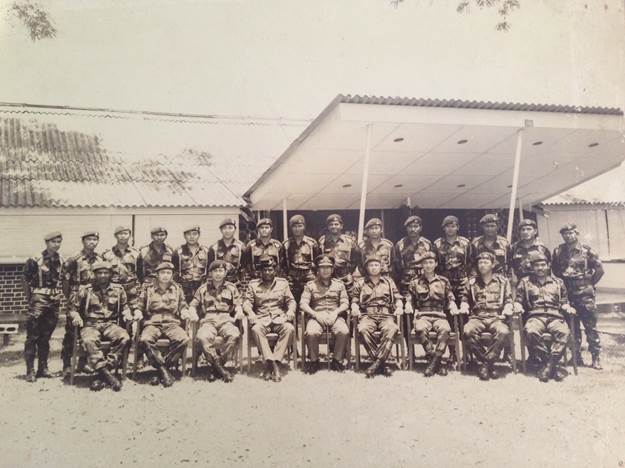 |
POPO
In 2 ARTY, POPO (Public Order and Prevention of Crime Ordnance) training was always conducted; particularly in crowd control and road blocks. This was the Ordnance that gives the PDRM full power to stop and search, crowd disposals and arrests. PDRM may requisite military assistance if they could not cope with a POPO situation. Hence military units had always prepared for POPO duties for any eventualities. The military had the POMAN (Public Order Manual) and basic anti-riots equipment, including tear gas. Military vehicles had anti-riot screens added on the windscreens and side windows.
Allen had three live POPO situations and deployments during his entire carrier. He was Chief of Staff (Ketua Staff) 4th Infantry Divison in Wardieburn Camp during the sacking of Anwar Ibrahim in 1998. He was an Officer Cadet instructor in FMC Sungai Besi in 1969 and he was in involved the May 13 incident doing mainly patrolling duties. He was also deployed as a Platoon Commander during the Penang Hartal Incident in 1967.
The Penang Hartal Incident started in November 1967 and lasted about six weeks. Hartal refers to a cessation of work or businesses in protest against a political decision. The Hartal was due mainly to the devaluation of the Ringgit and was initiated by the opposition political party and business Towkay’s. Unfortunately the closing of businesses, shops and street protests turned ugly and led to racial riots.
E Battery (Bty) 2 ARTY stationed in Taiping was deployed to Penang. The Bty had two POPO platoons. One Platoon was deployed to conduct two road blocks and Allen was in the other platoon reserved for crowd disposal. His POPO platoon was organised into two rifle sections and a Platoon HQ. His platoon was equipped with a loud hailer, his sergeant carried the tear gas pistol, a signaler, a bugler, two banner carriers, two tape liners, two non-medics stretcher bearers and a diarist cum photographer. The Bty also had an admin party securing Allen’s land rover vehicle and two 3 ton military lorries following behind whenever his platoon dismounted. They were only allowed to carry the Self-Loading Rifle (SLR) and personal pistol. Automatic firing weapons like the HBSLR (Heavy Barrel) and Small Machine Gun (SMG) were not allowed. The platoon was designed to advance for crowd control in a box formation. Their biggest POPO assets were the WW I steel helmets and old gas masks. They were not issued with riot control shields as they were not in close proximity with the crowd.
POPO training in the unit was a breeze especially with a staged and managed crowd of several rioters. The crowd always dispersed when the bugle blew, gave the standard warnings three times, white tape laid out and the platoon marched forward. The worst POPO training was to experience tear gas. Allen recalled being put into a Kamunting Camp's unused building which was a former hospital mortuary room. There were no windows and tear gas canisters were thrown inside where they were to experience the effects.
Live crowd control in the Penang Hartal was scary. Allen’s platoon of 34 gunners was facing an angry crowd of a few hundred rioters. It was also his first live experience in POPO crowd disposal. Allen recalled that live crowd dispersal was the mother of all experiences in the face of hostilities. “You feel inadequate by the sheer mass of the crowd. It was so intimidating and more so if the crowd was rowdy.”
E Bty Tactical (Tac) HQ and Allen’s platoon were to operate from the Police HQ at Penang Road. The Bty received a call to deploy mid-morning. There was no time for area recce and their task was crowd dispersal at the Penang Polo ground in front of the Penang General Hospital. Allen’s platoon was to marry up with a Federal Reserve Unit (FRU) unit at the Macalister Road Roundabout rendezvous (RV). The road block there was manned by E Bty.
Allen arrived at the RV and met the FRU Police Inspector. He gave Allen a quick brief of the situation and asked him to sign the requisition form putting Allen in charged effectively. The FRU unit was to form up behind Allen’s platoon. Meanwhile Allen’s platoon had dismounted and formed up into the box formation under his Sergeant. They marched forward to the FRU line in Jalan Hospital at the edge of the Polo ground. The FRU unit moved aside and they had passage of line to the front. The changeover was effectively smooth and precise.
Allen then saw the large crowd in front of him. He was scared and was not sure if he had showed it; but his Sergeant was beside him giving him confidence. He focused himself on the crowd dispersal drills that his platoon had practiced over and over again. He gave the order to march forward and stopped about 600 meters short of the crowd. Luckily the crowd was not rowdy and aggressive. There were no noise and no throwing of stones or Molotov cocktails etc. The crowd leaders had their backs to the platoons and were obviously organising and encouraging the crowd. Then Allen noticed the people at the rear of the crowd had started to disperse towards Jalan Scotland when they saw his platoon’s presence. Allen believes the public was generally more scared of the Military than the Police. Allen’s platoon stood firmly on their ground and waited whilst the crowd thinned out. Allen did not know where they had reassembled but only he had dispersed them and done his job.
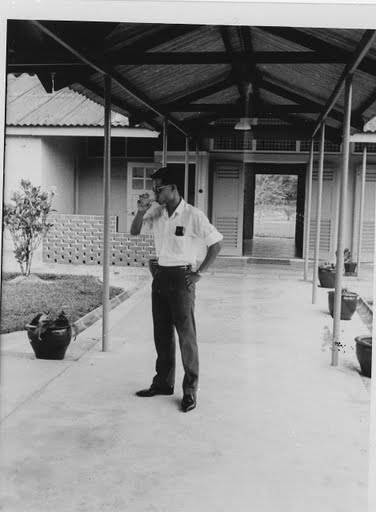 |
First Command
Allen was given his first command of 1 ARTY in 1984 at the age of 40 years old. He was matured and was prepared to take up the challenges of commanding an Artillery regiment. The normal tenure for Commanding Officers (COs) in the Malaysian Army was 18 months to 36 months at most. He commanded for six years straight and held the record for being the longest serving CO in the Regiment and also longest in the Army at that point of time.
Commanding a regiment was never seen an easy task for Chinese officers. His command had more challenges as his Regimental officers and gunners were predominantly Malays. When Allen was given to command the Regiment after 20 years in service, the Army had Malaysianised in most ways. He was brought up during the British era and now has the challenge to command in the Malaysian ways. Allen had to think in English, process the thought into Bahasa and translate his requirements to the best of his ability. What assisted him were his leadership skills, traits, thoughtfulness and experiences.
Allen’s first year of command was the most difficult and demanding. Things were coming together in his second year of command and the remaining of his command tenure was enjoyable. There were good understandings and matching’s of leadership and soldiering. The ‘Standing Operation Procedures’ (SOPs) and policies took over and the Regiment was moving along in the right direction.
Having four Second-in-Command’s (2IC) and as many Adjutants changes in his six years as CO did not complement well to his command, directions and flow of requirements. However Allen had always insisted on having Malay 2ICs, Adjutants and the Regiment Sergeant Major (RSM). He says ‘this was to balance the Chinese in him’. Other ethnic races in particular had never doubted his loyalty and leadership as he trust his calibre had always been consistent and credible. He was always firm but fair. Successes in every Army Training and Evaluation Program (ARTEP) tests for the Regiment spoke volumes for his command ability.
Needless to say there were lots of jealousy and he had a poison letter accusing him of punishing ONLY Malay soldiers which was definitely an anomaly in statistics. Surely he would discipline more Malay soldiers who were the majority in the Regiment as compare to others in the ‘dan lain lain’ group.
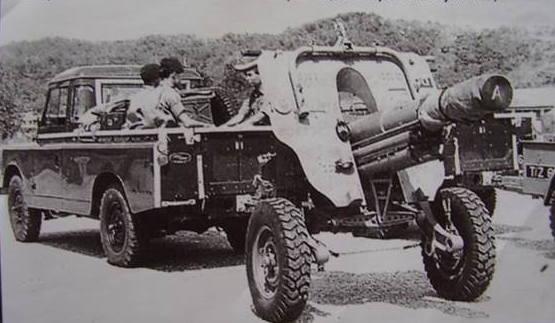 |
Allen had to place several firm policies to enhance professionalism and harmony in the Regiment. Firstly he would insist on communicating with his officers in English and in Bahasa Malaysia to all Non Commission Officers (NCOs). He had always travelled with his 2IC and/or Adjutant in his staff car. Islamic issues were always handled by his 2ICs, RSM and unit Ustaz. Friday prayers were compulsory as with any Muslim religious activities proposed by his 2IC.
Religious issues and discipline were two aspects of command that needed to be addressed with extra care. Allen’s policies and the unit standing orders were clear and practical. He would charge and punish those guilty accordingly and would use the maximum allowable sentences of 90 days detention which may look harsh and cruel. He felt that harsh punishments were necessary when so required and that he should be consistent. His General Officer-in-Command (GOC) was not in favour of his maximum sentence policy but never once reduce the sentence even though he could.
He would make a point to visit his soldiers in detention every fortnight. An angry soldier swore to kill him from his cell while another soldier thanked him for the punishment and confessed that he deserved it and had learnt his lesson. Allen would counsel them and they knew he would take extra efforts to visit their families in the camp, while they were doing time. Allen had even promoted soldiers after they had served their detention.
Allen is one who never backs down and compromise, no matter what. The same GOC was known for his idiocracies, erraticness and with a temper to boot. He was also a chain smoker. Nobody dares to remind him that he cannot smoke in smoking restricted areas. Allen did a hat trick on him. The GOC came to Allen’s Regiment for his Annual Admin Inspection. The visit started with a parade and a briefing in the Ops room, which was a bunker type room with no windows and no ventilation. Allen is a non smoker and smoke in the Ops room would tears everybody up. Requesting the GOC not to smoke was out of the question. Allen politely placed a “No Smoking” warning sign as his first Powerpoint presentation slide. “Dilarang merokok, Pegawai Memerentah mudah terbakar”. No smoking, the CO is highly inflammable. The GOC was not amused but complied by leaving the ops room in a huff. The GOC returned later and thanked Allen for his humour.
Allen’s unit Ustaz was diabetic and gangrene had developed in his fingers. He was adamant and refused to amputate his fingers due to his piety. His whole hand was rotting away with maggots. The stench from rotting flesh was unbearable and affecting his neighbours in the Military Quarters (MQ) flat. His wife pleaded to Allen to force his husband to be treated. He became delirious and Allen forced him to the Military Hospital and got his wife to sign the ‘Approval to Amputate Certificate’ but he ran away from the hospital to avoid amputation. Later Allen managed to get a Chinese ‘Sinseh’ to treat him with Chinese herbs and oils. The gangrene dried up and his fingers dropped off without any amputation. The Ustaz thanked Allen for his understanding.
On one occasion Allen had to use his wits to resolve a religious problem. His Malay soldier wanted to marry a Chinese girl. She was over 21 years old but her parents were against the marriage. The issue lasted for more than a year and it was not getting any better. After much counseling and pestering to the girl's parents, they agreed to the marriage, but with a very strict condition to observe Chinese culture. The ‘hantaran’ from the soldier was to include a full roasted pig, a life cockerel, biscuits, a bottle of brandy and a cash dowry. The total cost was RM3,500.00. The soldier agreed to all except to the roasted pig and alcohol. Allen managed to get the soldier to think out of the box. He was to be deployed to Border Ops and the hantaran was to be delivered on his behalf during his absence. His hantaran was RM3,500 cash to Allen and he would make the arrangements to send the hantaran to the girl's parents as itemised. Thus technically he did not infringed on any religious requirements. It was a win-win situation and they were happily married in a simple ceremony in the border area.
Happy hour in the officer’s mess was mandatory but beers were optional. Malay soldiers were never made barmen in the Officers and Sergeant Messes. However Allen had never discouraged anybody from drinking alcohol and if anybody was drunk he would be apprehended by the Duty Officer and put into the Guard room until sober. Needless to say this included the Commanding Officer (CO). Allen was high during one long happy hour session and was happily escorted to the Guard room cell.
Malay soldiers under Allen’s command were by and large straightforward, uncomplicated and generally easy to manage. He had to be mindful not to interfere or get involved in any way with their religious issues and cultures. Allen was always helpful, humble and had never belittled them in anyway. He was told later that Malay soldiers accepted and preferred non Malay commanding officers. Allen attests to that after six years of experience. Lastly Allen wife's exemplary contribution to the unit Wives Club (BAKAT) had helped his command. Looking after Malay soldiers' families was just as important to the trust in the CO and to morale in the unit.
Allen was proud to have commanded an Artillery regiment and his gunners were proud to have served with him as their CO to this day. Allen had left the Army but the Army had not left him. He had left a good legacy as a Chinese CO to Malay soldiers and his legacy stood the test of time. During the Regiment's Golden 50th anniversary, all past CO’s including the seconded British CO’s were invited to the celebration. It was a grand occasion and billboards of past activities were exhibited. A group of retired soldiers gathered around some old pictures of Allen and were trying to identify who "Tuan Lai" was. They exchanged memorable episodes they had with him. Allen quietly listened to their stories and whispered from behind "Sayalah Tuan Lai". He had loved his men better than their mothers.
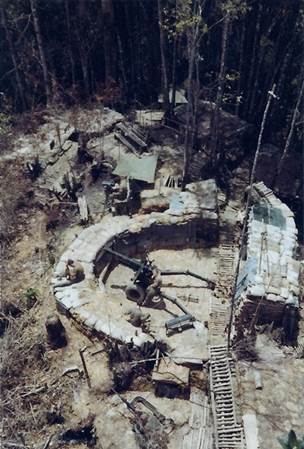 |
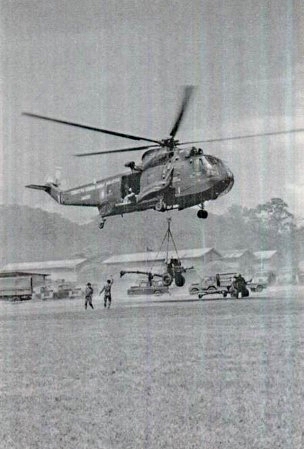 |
Units Served:-
1964 – 1968 2 ARTY
1968 – 1970 RMC
1970 – 1973 2 ARTY
1973 – 1976 1 ARTY
1976 – 1978 KL GARRISON
1978 – 1979 PPT SELANGOR
1980 – Staff College
1980 – 1981 LATEDA
1981 – 1984 1 DIV
1985 – 1990 1 ARTY
1990 – 1991 PROJECT GEMAS MINDEF
1991 – 1995 MTAT
1995 – 1999 4 DIV
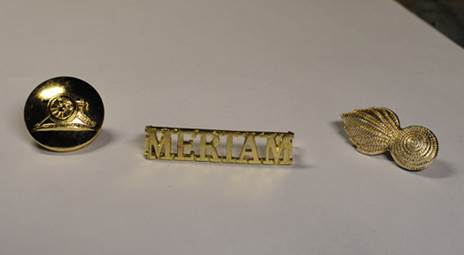 |
Courses Attended:-
19 Aug 1965 – 16 Jan 1966 Artillery YO (Young Officers), UK.
10 Aug 1966 – 06 Oct 1966 Artillery Regt Officers Gunnery Manly Australia.
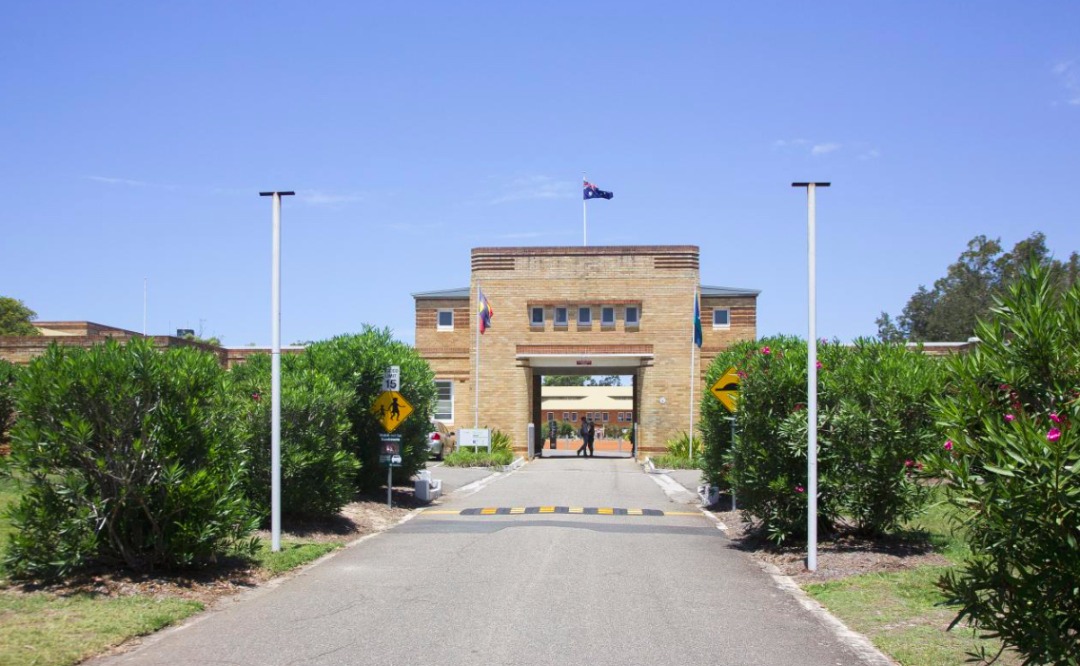 |
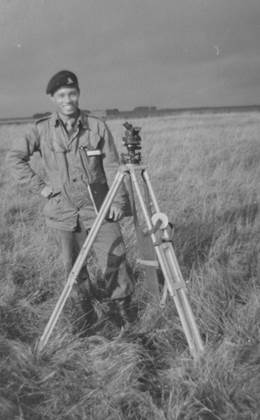 |
15 Jan 1967 – 25 Feb 1967 YO Tactics MMTS
12 Mei 1967 – 22 Mei 1967 Regimental Fund AF Pay services MINDEF
10 Jan 1969 - 31 Jan 1969 Officers Basic Weapons AMMS
27 Oct 1971 – 9 Dec 1971 Battery Commander Manly Australia
04 Apr 1972 - 30 May 1972 Staff Duties MMTS
20 Oct 1973 - 04 Dec 1973 AATC PULADA
14 Jan 1980 - 28 Nov 1980 Staff College MTAT
31 May 1982 - 14 Aug 1982 SOC PULAWAN
13 Mar 1989 - 22 Sep 1989 MPAT
Honours and Awards:-
Pahlawan Angkatan Tentera (PAT)
Kesatria Mangku Negara (KMN)
Paduka Kesatria Mahkota Kelantan (PKK)
Bintara Setai Kelantan (BSK)
Pingat Jasa Kebaktian Perak (PJK)
Pingat Perkhimatan Am (PPA)
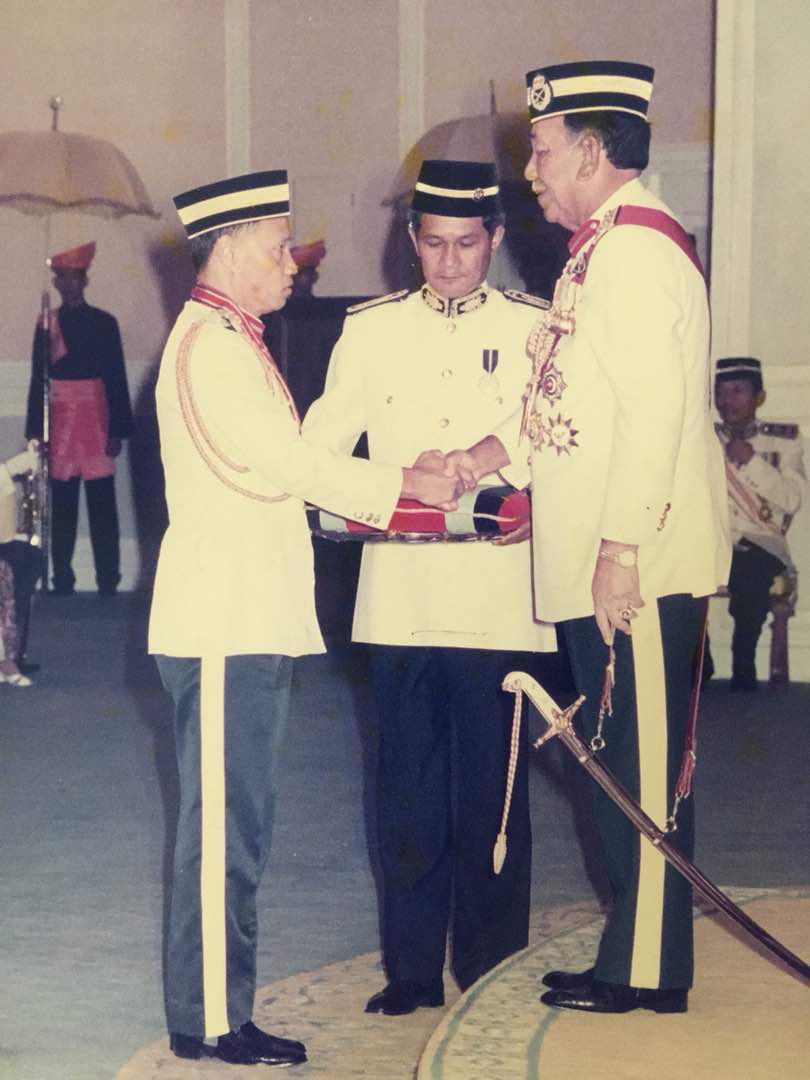 |
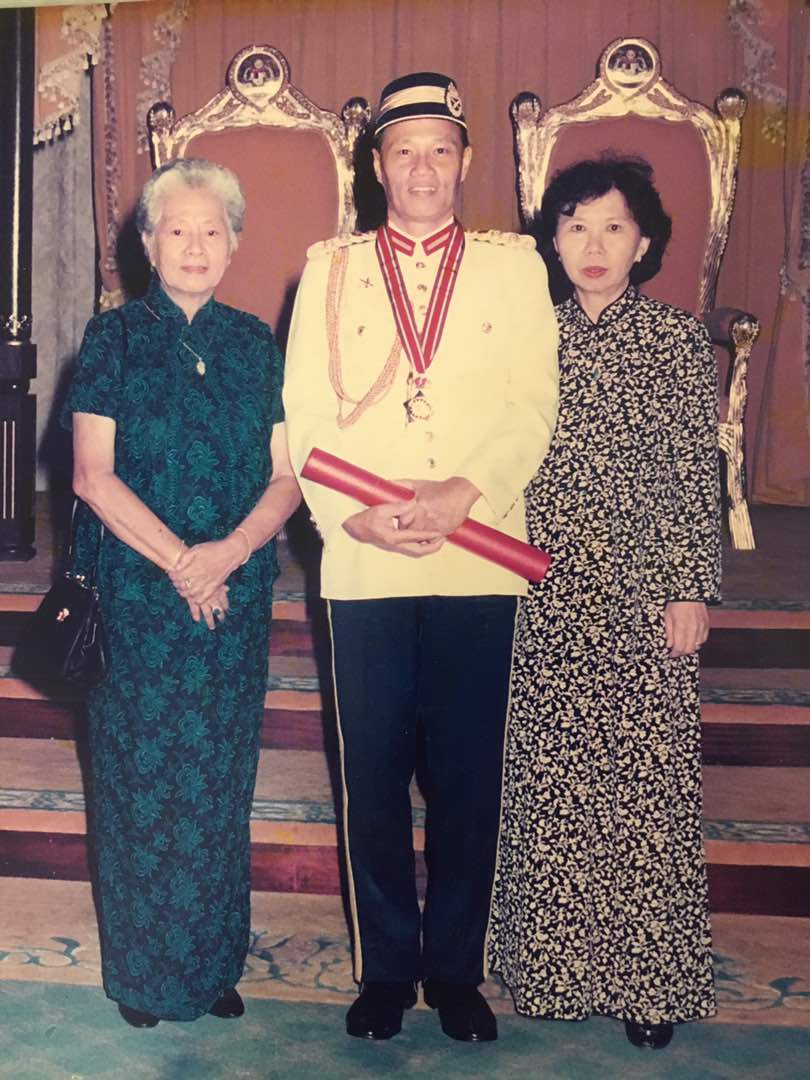 |
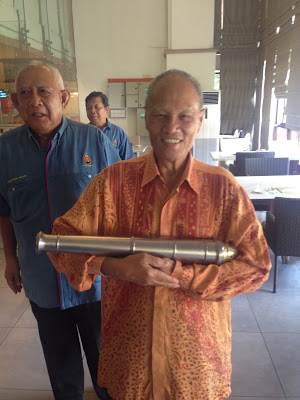 |
Humour and personal thoughts:-
Total Quality Ledership
I personally believe and adhere to TQL (Total Quality Leadership). It is far superior and more appropriate for the military than TQM. Unfortunately, we had adopted TQM in line with the USA but I still believe the British are better soldiers. TQM does its work systematically and it is outside the leader. TQL is from the leader’s leadership and quality traits and guts. TQL always overcome fears.
Boys Home Sungei Besi
In 1960 the Boys Wing FMC Port Dickson moved to its new camp in Sungei Besi. The Boys Wing recruiting team had gone round the schools in the country in their recruiting drive. The RM40.00 per month allowance paid to every student was compelling enough for Allen to apply. His headmaster was also delighted that Allen requested to enrol to the Boys Wing and had agreed that it was the ideal place for Allen to be in. He gave Allen the necessary enrolment forms for his father’s consent. Two weeks later a reply came back to his father informing him that the Boys Home Sungei Besi could not take in Allen as the home could only take in juvenile delinquents ordered by the session’s courts. He paid the headmaster’s car a visit the next day.
If I did not join the Army ?
I will most certainly continue to be on the wrong side of the street. I will have the famous Botak Chin as my 2IC.
Would you do it all over again if you have another chance ?
Yes definitely. Soldering seems to be my soulmate. I was totally comfortable and positive throughout my career as I was always fine with the knowledge, skills and training required.
Your most unforgettable moment in Service ?
Service as a Subaltern in Sabah during Konfrontasi. Definitely the episode where I fired the DF (SOS) saving my BK and party in the Sg Limau boat Incident. Everything went like clockwork. Our Gunnery procedures and SOP kept us calm and we just did what we were trained to do.
Your proudest achievements ?
I had fired the Gun Salute in Port Klang for Queen Elizaberth 2’s visit to Malaysia in 1972. The gun salute protocol required 84 gun fire. Nobody had conducted the 84 gun salute before. A very rare Artillery tradition. It is now an international tradition called ‘gun for gun’ on the principle of equality of nations.
Advice for current generations young Malaysians ?
Joining the army is not like any other 9-5 job. You really need to LIKE service life. There are many benefits eg. Learning many skill sets relevant to Leadership, HR, situational awareness, TQM, physical fitness, camaraderie and training for perfection. Do not look at the pay scheme alone. The real remuneration and dividends are intangibles and cannot be enjoy from the civilian world. There is total joy in commanding. There is absolutely no room for grouses and complaints in the service. You will need to have a high quotient of self discipline. When it comes to the crux of the requirements, King, country, your men and duty always comes first. If you are not committed please do not sign up. Pension and Medical care tops the list of benefits. The downside whilst in service is isolation from the civilian world somewhat. It is a 24/7 job. But we can adapt quickly and confidently any time we leave the service.
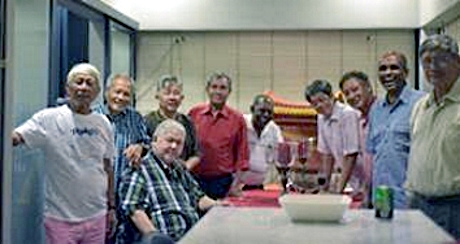 |
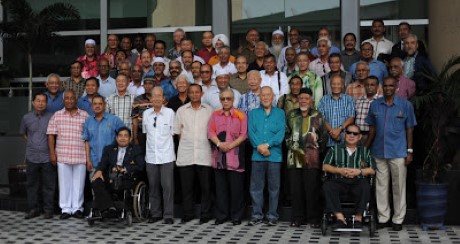 |
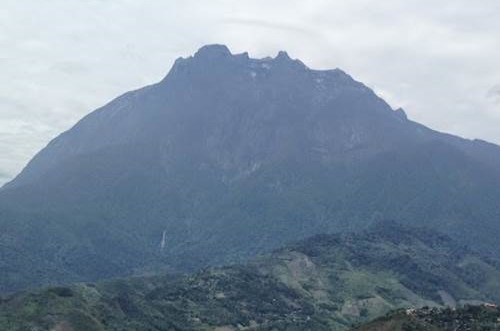 |
 |
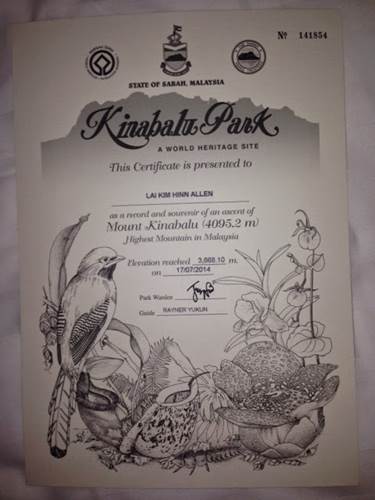 |
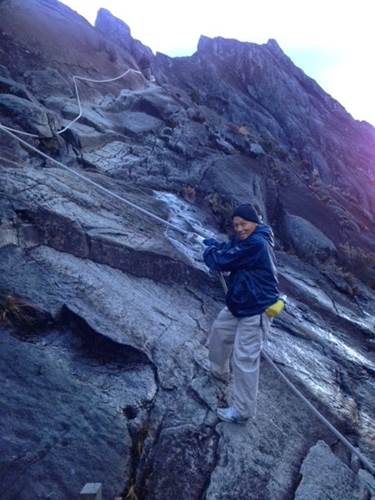 |
Allen first climbed Mount Kinabalu Sabah in 1966 at the age of 22. He climbed Mount Kinabalu again on 16 July 2014. A month shy of reaching 70 years.
Epilogue
Colonel Allen Lai Kim Hinn (Rtd) Regt Number: 200241 retired from the Malaysian Army on 5th August, 1999 after serving with pride and dedication for 36 years. As a Veteran in the civilian world, Allen was not content just to enjoy his retirement. He took on a new challenge and acquired his professional real estate licence to practice and joined a real estate agency as a Branch Manager. After 16 years in the real estate industry, he is now a successful Managing Director.
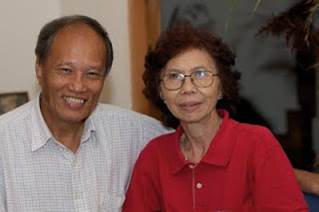 |
Allen is married to Peggy Kum Bick Choo and they are blessed with 3 children and 3 grandchildren. They currently reside in Bukit Damansara, Kuala Lumpur. Allen also took up bird watching and photography as a hobby, giving him quality time and a new passion with Mother Nature. MACVA is very proud of Allen’s achievements and his sacrifices for King and Country. We wish this Old Gunner good spirit and good health in enjoying his well-deserved retirement with his family and every success in his future undertakings.
Once a gunner, always a gunner.
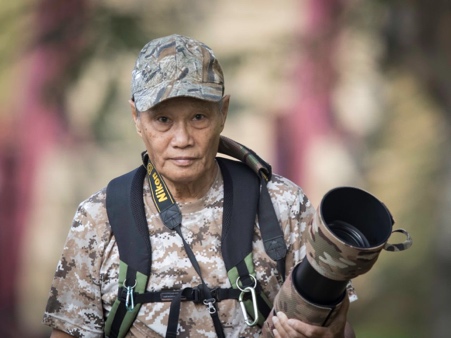 |
Recorded for MACVA Archives.
Maj Wong Kwai Yinn (Rtd)
18 Jul 18
References:
A. Royal School of Artillery https://en.wikipedia.org/wiki/Royal_School_of_Artillery
B. Footslogger http://sheldrake-gunnersclub.blogspot.com/2009/11/2nd Lt-pan-and-i-were-commissioned-in.html
C. Deployed http://sheldrake-gunnersclub.blogspot.com/2009/11/deployed.html
D. BK Under Enemy Fire http://sheldrake-gunnersclub.blogspot.com/2009/11/bk-under-enemy-fire.html
E. Rejimen Artileri Diraja https://en.wikipedia.org/wiki/Rejimen_Artileri_Diraja